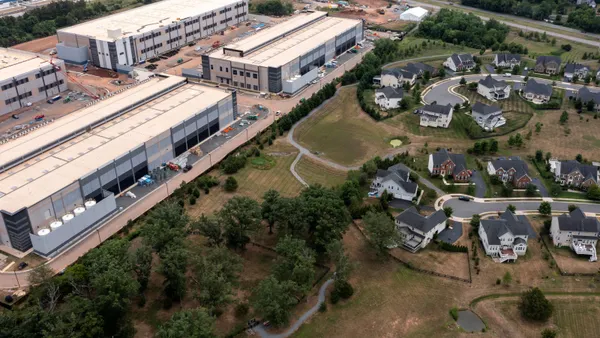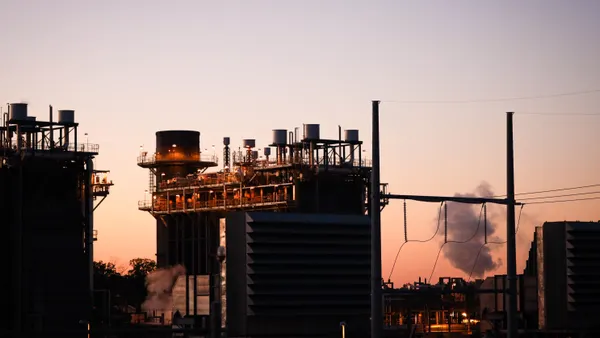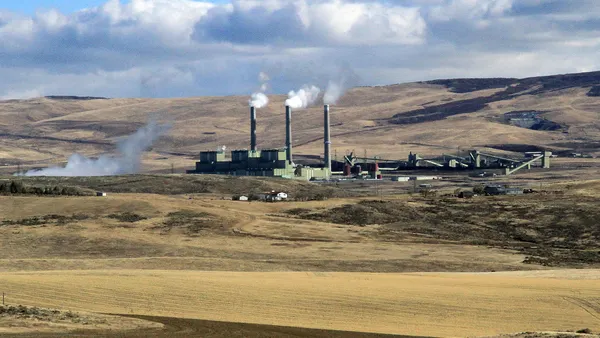Dive Brief:
-
The PJM Interconnection on Monday announced an initiative to value and price fuel security for power plants in its wholesale power markets as part of a larger effort to ensure grid resilience.
-
While fuel security is not a risk in the short-term, PJM CEO Andy Ott said the initiative will focus on valuing attributes like dual fuel capabilities and onsite fuel supply that can prevent the system from becoming overreliant on natural gas generation in the future.
-
Critics say the effort is too narrow and similar to PJM’s capacity performance rules put in place after the 2014 Polar Vortex. The fuel security announcement came as PJM also released a deactivation analysis for three FirstEnergy nuclear plants, finding they can retire without threatening reliability.
Dive Insight:
PJM’s new fuel security analysis takes aim at a persistent concern for the grid operator — that a growing reliance on natural gas generation will make the system vulnerable, particularly in the winter months, when gas is diverted to home heating.
PJM CEO Andy Ott told reporters Monday that while fuel supply is not at risk today, replacing more coal and nuclear generation — which keep their fuel onsite — with natural gas could make the system more prone to disruption from weather or attack.
“We're looking at the type of approaches that would identify potential vulnerabilities in the fuel delivery system, whether they are driven by weather or advanced security issues related to folks attacking infrastructure,” Ott said.
The initiative will have three phases, Ott said. The first will identify attributes of fuel secure generation “such as onsite fuel or multiple delivery systems.”
The second phase will model those attributes over the PJM grid, looking for areas where they are not available. This would be similar to PJM’s current transmission constraint planning, Ott said.
In the third page, PJM would “test criteria against specific delivery concerns identified by federal or state agencies,” Ott said, before potentially designing a tariff to reward the fuel security attributes in its capacity market.
Ott said PJM’s current reliability analyses do not take potential fuel supply constraints into account, making the new initiative necessary. But critics say it will likely end up rewarding many of the same generators that win capacity performance contracts, which require generators to be available to run during times of system stress, like extended cold snaps.
“The big concern here is that PJM’s study will result in artificial fuel constraints by modeling an artificially small fleet of plants and looking only at one fuel security issue,” Silvio Marcacci, spokesperson at think tank Energy Innovation, said in an email. “Though PJM tries to differentiate this from capacity performance, this is really what capacity performance was originally intended to handle.”
Other critics say the initiative is too little, too late. Last month, generator FirstEnergy asked the Department of Energy to use its emergency powers to save coal and nuclear plants in PJM from retirement, arguing of a pending “crisis” in grid security if more are allowed to retire.
PJM issued its rebuttal on Monday, saying in a deactivation analysis that FirstEnergy’s three Ohio nuclear plants can retire without threatening power reliability. Ott said while the system is safe in the short term, the request highlights issues with fuel security the grid operator must monitor in the future.
“We don’t think there's an emergency today,” Ott said. “We said that very bluntly and very publicly. However, we do think these are legitimate questions for the future.”
The fuel security initiative could end up rewarding many of the same plants targeted by an ill-fated DOE proposal to FERC last year that would have provided cost recovery for generators with onsite fuel supply. While DOE welcomed the PJM initiative, it reserved the option to act on its own to support the plants.
“FERC has been studying the underlying economic and regulatory causes of this problem for years, but still has not taken sufficient action,” DOE spokesperson Shaylyn Hines told Utility Dive via email. “We share PJM’s concerns and urge FERC to take immediate action to stop the loss of fuel-secure capacity. At the same time, DOE continues to review all options within its authority to ensure a resilient and secure electric grid."













